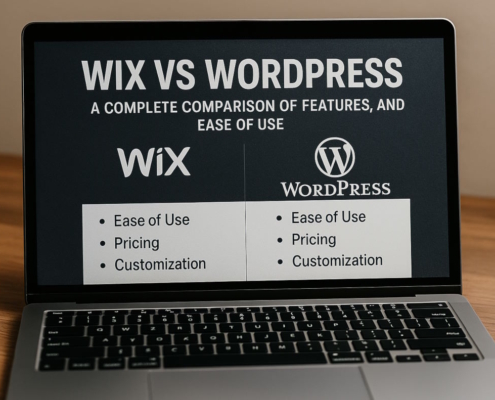Introduction
Small, independent teams engaged in small, independent projects were frequently the initial proponents of agile development. To the delight and improvement of software developers worldwide, they demonstrated the viability of the agile paradigm. For many teams, it turned out that agile handling of projects was more successful in software development than the waterfall development framework.
Many companies are implementing agile beyond individual teams and projects to entire programs as a result of the increasing acceptance of agile project management. IT, business development, marketing, and other areas have also embraced agile in addition to development teams. The debate of Waterfall vs Agile methodologies continues to shape project management strategies across industries.
Describe agile project management
Iterative project delivery with an emphasis on regular updates that take client feedback into account is known as agile project management. Having the flexibility to make changes at every iteration encourages speed and adaptability. This method differs from a waterfall, linear project management technique that adheres to a predetermined course with little deviation. Waterfall vs Agile, as methodologies, highlight significant differences in approach and flexibility.
Agile gives developers the freedom to tweak and iterate throughout the development process, which is necessary given that today’s clients and companies demand quick replies and modifications. The foundation of DevOps methodologies, which combine the efforts of the operations and development teams, is also agile project management.
Describe waterfall project management
A well-defined order of execution is a requirement of a waterfall project management strategy, wherein project phases are not allowed to proceed until they have received final clearance. Reaching back to a phase after it’s finished might be expensive and challenging. Though they work in smaller steps with frequent feedback loops, agile teams might stick to a comparable timeline.
There is a linear, chronological formula that the waterfall project management method uses. It works well for projects with repeatable, predictable procedures, but it can catch development teams off guard and prevent them from making faster adjustments than a rival. Waterfall vs Agile methodologies are often compared in terms of flexibility and adaptability to changes.
A single scope modification or missed deadline in a waterfall project may have a significant effect on later releases. Further, if a team is entirely committed to new features work and constantly pushing ahead toward the next stage, it might be difficult to resolve technical debt or address defects when the team is solely focused on the subsequent stage of development.
Here’s an example of a typical waterfall project with firmly defined time segments. Due to the possibility of losing the chance of iterating in the future, this fosters a “use it else lose it” mentality among stakeholders, product owners, and developers, encouraging them to ask for as much timeframe as possible during each time period. While everyone agrees that the initial agreement is not altered, waterfall teams typically attempt to prevent scope creep via “change control.”
A few well-known difficulties in product development may be made worse by the waterfall framework.
- Roadblocks and dependency management: Conventional approaches to project management frequently result in “critical routes,” in which the project cannot proceed unless a roadblock is cleared.
- Establishing the product and obtaining user feedback are challenging: To make matters worse, the final user cannot engage with the product unless it is finished. This means that significant flaws in the product’s code and design remain hidden until it is released.
Benefits of waterfall project management
- Less coordination is needed because the sequential operations are clearly defined in phases.
- The definition of work dependencies is aided by a well-defined project phase.
- Once the requirements are established, the project’s cost can be calculated.
- Increased emphasis on designing and documenting requirements
- Before any program is written, the design step is more structured and methodical.
Drawbacks of Waterfall Project Management
- Stricter stage sequences make it more difficult to divide and distribute labor, and teams grow increasingly specialized.
- Danger of wasting time because of interruptions and delays during phase changes
- Although agile supports a more multidisciplinary team composition, there are more hiring requirements to fill expert phase teams.
- Additional communication overhead when switching between phases
- Because the focus is on the current phase, ownership of the product and engagement might not be as prevalent as they would be in an agile environment.
Waterfall vs Agile Methodologies
Software teams utilized agile for the first time, switching from the conventional waterfall strategy to one that gathered feedback continuously and made adjustments all the way through the development cycle. Waterfall vs Agile methodologies represent two distinct approaches to managing projects and addressing changes throughout the development process.
By establishing multiple gradual phases with regular feedback periods, agile project management adopts an iterative strategy for development. As a team can make adjustments along the way rather than following a set course, this encourages adaptability. It also makes it possible for teams to produce a succession of successes over time with frequent, high-impact deployments.
Iterative releases provide a group of possibilities to:
- Adjust to shifting conditions, such as stalled work or recently found requirements.
- Get input from interested parties at every stage of the process, then adapt and change without worrying about missing the deadline for the finished product.
- Create links and relationships between positions to facilitate successful communication and connection-making.
Teams using Agile are better equipped to withstand the inevitable changes that arise through a project.
The shared abilities of the software team are even more advantageous. Work in every area of the group’s codebase is more flexible due to the overlap of their expertise. In the event that the project’s trajectory changes, effort and time won’t be lost.
Agile principles
- A project using agile methodology is divided into multiple incremental phases with consistent intervals for input.
- A need for a project is divided into smaller components and ranked in order of significance.
- Fosters teamwork, particularly with clients.
- Varies frequently to make sure that client requirements are satisfied
- Permits a team to successfully adjust to changing needs by integrating planning and execution.
Benefits of agile project management
- Quicker feedback loops
- Early problem identification
- Increased likelihood of client satisfaction
- A significant improvement in getting to market
- Increased responsibility and visibility
- Over time, more productive teams get greater results.
- Value delivery-focused flexible prioritization
Drawbacks of Agile Project Management
- Inter-project interdependence and the critical route might not be as well defined as they are in the waterfall.
- There is a cost associated with organizational learning.
- There are numerous technical requirements for genuinely agile implementation with a continual deployment approach.
Factors to take into account when adopting agile
It can be difficult to transition to agile, particularly for teams or organizations that are ingrained in more conventional project management methodologies. Employing a DevOps approach, in which operations and development teams collaborate closely when creating and maintaining software, may necessitate a variety of process modifications in order to transition to agile techniques. A team and all stakeholders must accept two key ideas while using agile principles:
- Optimizing the worth of the team’s production is the product owner’s main concern. The product owner sets the priority for the team by completing the most crucial tasks first.
- Only work that fits the development team’s capacity will be accepted. The owner of the product does not assign tasks to teammates or bind them to unspecified timeframes. As new work is accepted, the development team removes older tasks from the system’s backlog.
Let’s examine the methods used by agile programs to structure, manage, and arrange work in a manner that is iterative.
Roadmaps
A product’s or solution’s developmental path is described in a product roadmap. When using agile development, a roadmap gives teams crucial context that helps them accomplish both project-wide and incremental goals. Feature availability is communicated through deadlines seen in roadmaps, which are made up of tasks, which are sizable functional areas.
The roadmap will undoubtedly alter as work progresses and teams gain new knowledge; these adjustments could be minor or significant. To efficiently collaborate with stakeholders and adapt to the competitive environment, the roadmap should remain focused on the conditions that affect the project currently as well as long-term objectives.
This is a basic product team roadmap: initiatives are in the boxes, and the red milestone markers denote the dates.
Requirements
Every roadmap initiative is broken down into a collection of prerequisites. Unlike the lengthy documentation associated with conventional assignments, which can reach 100 pages, agile requirements are concise summaries of the necessary functionality. With time, they change and make use of the group’s collective comprehension of the target market and the intended outcome. Agile requirements stay lean as team members collaborate and have continuous conversations to create common ground. They are fully developed just when the execution phase is about to commence.
Backlog
The agile program’s backlog determines its priorities. All of the team’s work items, including technical and architectural tasks, bug fixes, enhancements, and new features, are included in the backlog. The product owner assigns the engineering team’s backlog tasks a priority. The team working on development then takes the backlog that has been prioritized as the only source of information about what has to be done.
Agile Metrics
Metrics are a source of great satisfaction for agile teams. Limits on WIP (work in progress) help the team and the company stay focused on completing the most important tasks first. Continual flow diagrams aid in identifying bottlenecks, while graphs such as burn-down and control charts assist the team in predicting their delivery cadence. These measurements and artifacts help the team stay focused on the main objectives and increase confidence in their future work output.
Agile functions on trust
Team members must have a high degree of trust for agile procedures to work, and this builds trust. Honesty is necessary when having tough talks about what’s best for the system and the product. As a result of the frequent interactions, thoughts and worries are regularly voiced. Members of the team must therefore have faith in one another’s competence (and willingness) to carry out the decisions decided upon during such discussions.
Conclusion
An inventive method for projects of all kinds, including software projects, is agile project management. Agile enables teams to deliver higher-quality products that satisfy customers by giving them the flexibility to adapt to change throughout the development cycle. Agile fosters innovation, increases responsibility, and gives teams more control all while advancing ongoing development.
Being agile enables you to adapt to change without losing control. And for any kind of program, that’s fantastic. Waterfall vs Agile methodologies will continue to be a key consideration for project managers and teams striving for efficiency and success.































